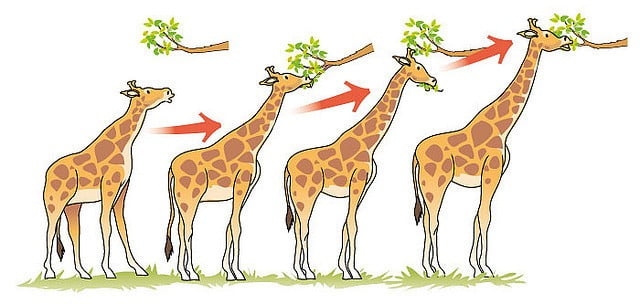Here are practice questions for Chapter-7 of Class XII Biology:- Evolution. This practice set comprises question from previous year board question papers, CBSE Sample paper, and NCERT Exemplar, and some other sources.
1 Mark
- Write the hypothetical proposal put forward by Oparin and Haldane.
- Select the homologous structures from the combinations given below:
- Forelimbs of whale and bats
- Tubers of potato and sweet potato
- Eyes of octopus and mammals
- Throns of bougainvillea and tendrils of Cucurbita.
- Why are analogous structures a result of convergent evolution?
- What is saltation according to de Vries?
- Rearrange the following in order of evolution: Gnetales, Ferns, Zosterophyllum, Ginko
- Name the common ancestors of the great ape and man.
- Name the earliest fossils of pre-historic man.
- What is genetic drift?
- List the two characteristics of mutations that help in explaining evolution.
- What do you understand be genetic equilibrium?
2/3 Marks
- What did Louis Pasteur’s experiment on ‘killed yeast’ demonstrate? Name the theory that got disproved on the basis of this experiment.
- Write the technical term that describes each one of the following statements with reference to their evolution:
- Microbes developing resistance to antibiotics in much lesser time scale.
- Resemblance of varieties of placental mammals to corresponding marsupials in Australia.
- What is adaptive radiation? Explain it with reference to the Australian marsupials.
- What do you understand by molecular evidences in evolution? Explain with the help of an example.
- In a population the frequency of genotype BB, Bb, and bb is 22%, 62% and 16% respectively. What could be the likely frequency of allele B and b?
- Name the ancestors of man based on the features given below:
- Humans-like meat eater with 900 cc brain lived in Java
- More human with brain size 1400 cc, lived in Central Asia, used hides and buried their dead.
- Human-like, vegetarian, with brain capacity between 650 cc and 800 cc.
- Man-like primate that existed about 15 mya. Fossils found in Tanzania.
- Select two pairs from the following which exhibit convergent evolution. Give reasons for your answers.
- Forelimbs of whales and bat
- Eyes of Octopus and mammals
- Tubers of sweat potato and potato
- Forelimbs of Cheetah and mammals
- Explain the interpretation of Charles Darwin, when he observed a variety of small birds on Galapogos Islands.
- Describe founder effect.
- What is the significance of Archaeopteryx in the study of organic evolution
- Describe the three ways by which Natural Selection can affect the frequency of a heritable trait in a population.
- How do Darwin finches illustrate adaptive radiation?
- Explain the increase in the number of dark winged moths in the urban area of post industrialization period in England.
- Differentiate between the explanations given by Darwin and de Vries, respectively on the mechanism of evolution.
- Refer to the figure given below and answer the questions that follows:
- Describe Stanley Millers’s experiment and mention its significance.
- What is speciation? Name any two events leading to speciation.
- Branching descent and natural selection are the two key concepts of Darwinism theory of evolution. Explain each concept with the help of a suitable example.
- Explain Lamark’s theory of evolution with the help of an example.
- Discovery of lobefins is considered very significant by evolutionary biologists. Explain.
5 Marks
-
- What is Hardy-Weinberg Law? How can it be expressed using algebraic equations? Under what conditions the Hardy-Weinberg equilibrium does remains undisturbed?
- What are fossils? How can be the age of fossils can be estimated? How do the fossils help in the fact that organism have come into existence through evolution?
- How can you show that adaptation has a genetic basis?
- (i) Name the primates that lived about 15 mya. List their characteristics features.
(ii) Answer the following:
-
-
- Where was the man like animal found?
- write the order in which Nenderthals, Homo hablis and Homo erectus appeared on the earth. State the brain capacity of each one of them.
- When did modern Homo sapiens appear on this planet?
-
Important diagram:
-
-
-
- Diagrammatic representation of Miller’s experiment
- Adaptive radiation of marsupials of Australia
- Convergent evolution of Australian Marsupials and placental mammals
- Operation of natural selection on different traits : (a) Stabilising (b) Directional and (c) Disruptive
-
-

